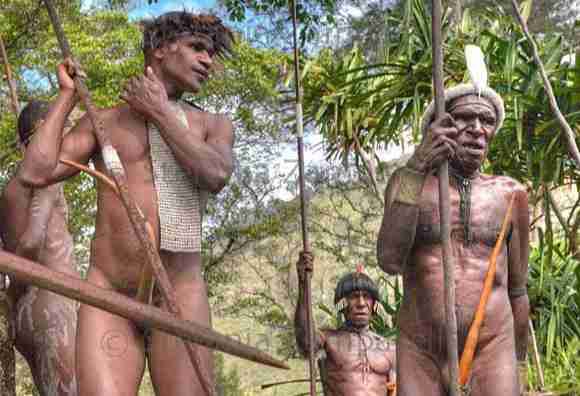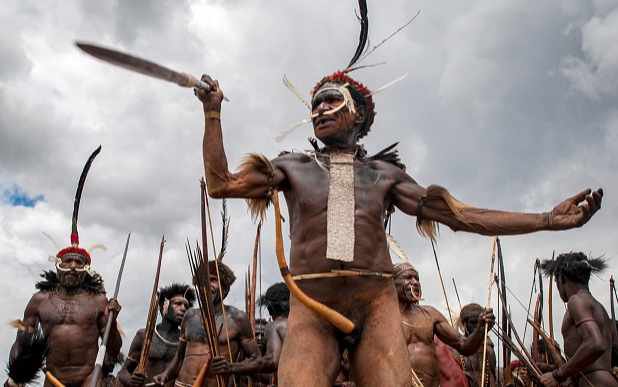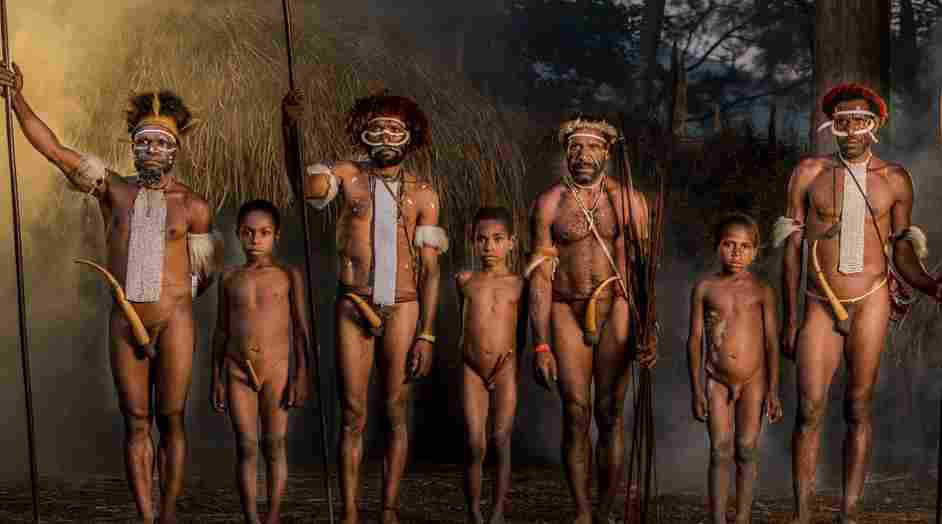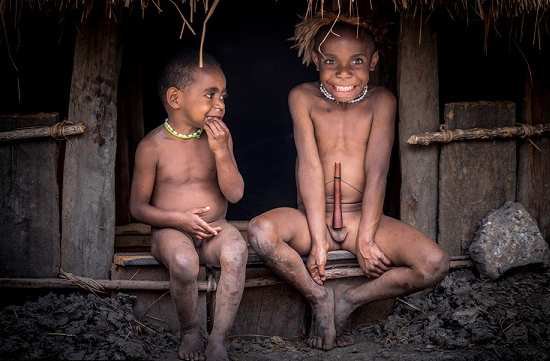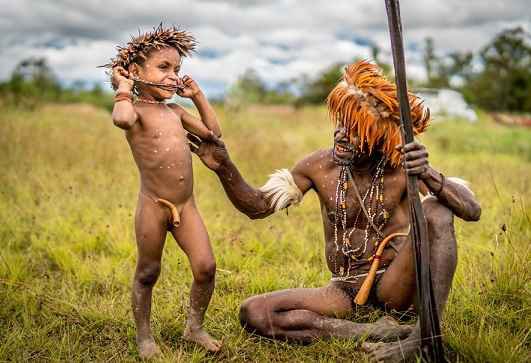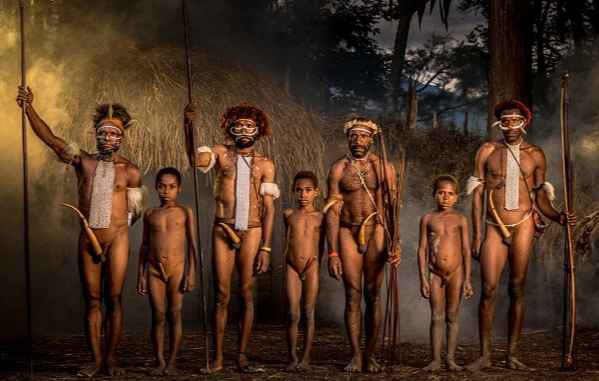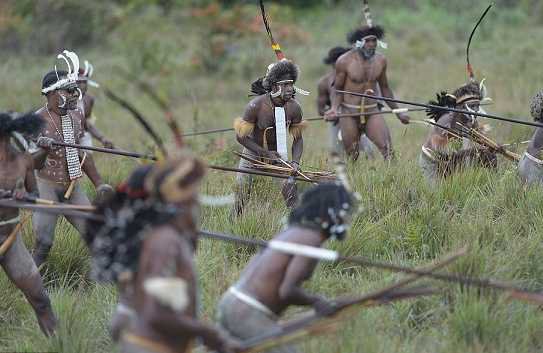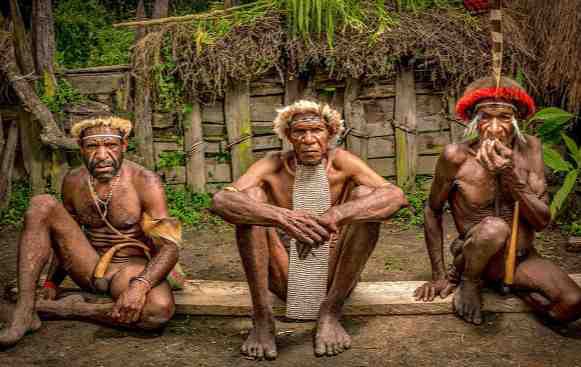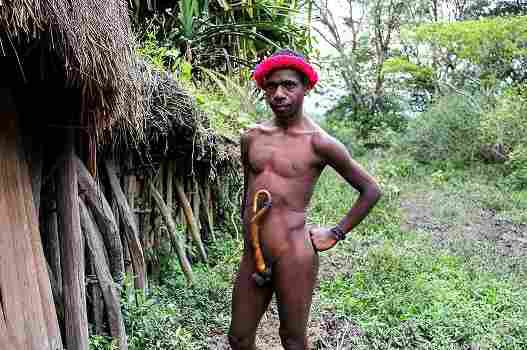The koteka, horim, or penis gourd is a penis sheath traditionally worn by native male inhabitants of some (mainly highland) ethnic groups in New Guinea to cover their genitals.
The Dani people show off their striking ‘koteka’ or ‘p$nis sheaths’ during a yearly cultural festival. The ultra-remote Dani tribe, from Indonesia’s Baliem Valley in the Highlands of West Papau, were snapped performing traditional war dances at their week-long cultural festival.
The tribesmen perform the rituals wearing an eye-catching item of clothing known as a koteka, or “p$nis sheath”, while women cook wild pigs on an open fire.
Koteka is made from dried out fruit and is held in place by two loops of string – one around the chest and the other around the scrotum.
People often think koteka is a sign of status, but they’re actually mainly a way of covering the wearer’s genitals traditionally worn by male inhabitants of certain ethnic groups across New Guinea.
The Indonesian government launched “Operasi Koteka” or “Operation P$nis Sheath” in the early 1970s in an attempt to try and modernize the people by encouraging them to wear shorts instead, but the plan ultimately proved fruitless.
The Dani are also known for a gruesome practice whereby the tribeswomen cut off the end of their own fingers to mark the loss of a relative.
Photographer Hariandi Hafid, 30, documented the annual festival and bloody customs of the tribe, who only became known in the Western world by chance in the 20th century.
Hariandi, from Makassar in Indonesia, said: ‘This festival is about carrying out sacred rituals to honor their ancestors. The dances are inspired by wars that took place in the past, and occasionally still happen among Dani tribes.’
“What’s most striking is the way they dress, there are still many who still use koteka in their daily lives.” The Dani tribe was stumbled across by American philanthropist Richard Archbold during an expedition in 1938.
Though the grim finger cutting practice has been condemned by the Indonesian government, Hariandi found evidence it lives on among some of the older women in the tribe.
The yearly festival contains customary dancing and music of Papua, rattan spear throwing, earth cooking, and the celebratory roast pig feast.
Hariandi said: “Some of the traditions are getting less common, like the finger cutting, which is being influenced by the growth of foreign religions. “But the koteka is still very common.
The Indonesian Dani tribespeople calls themselves the “Ndani” and there are at least four languages spoken in the communities, depending on where they’re based.
A famous curiosity of the Dani languages is that all colors are described with just two words. Mili denotes dark or cool shades like blue, green, and black, while mola covers light and warm colors like white, yellow, and red.


